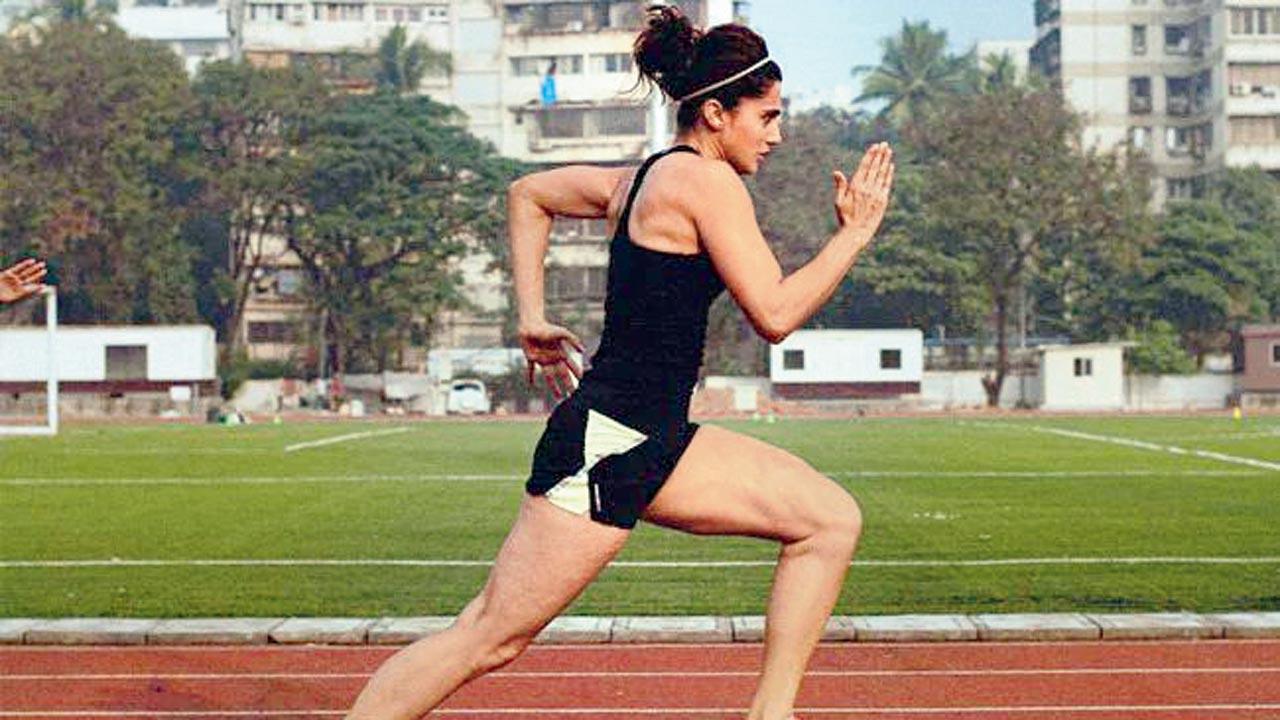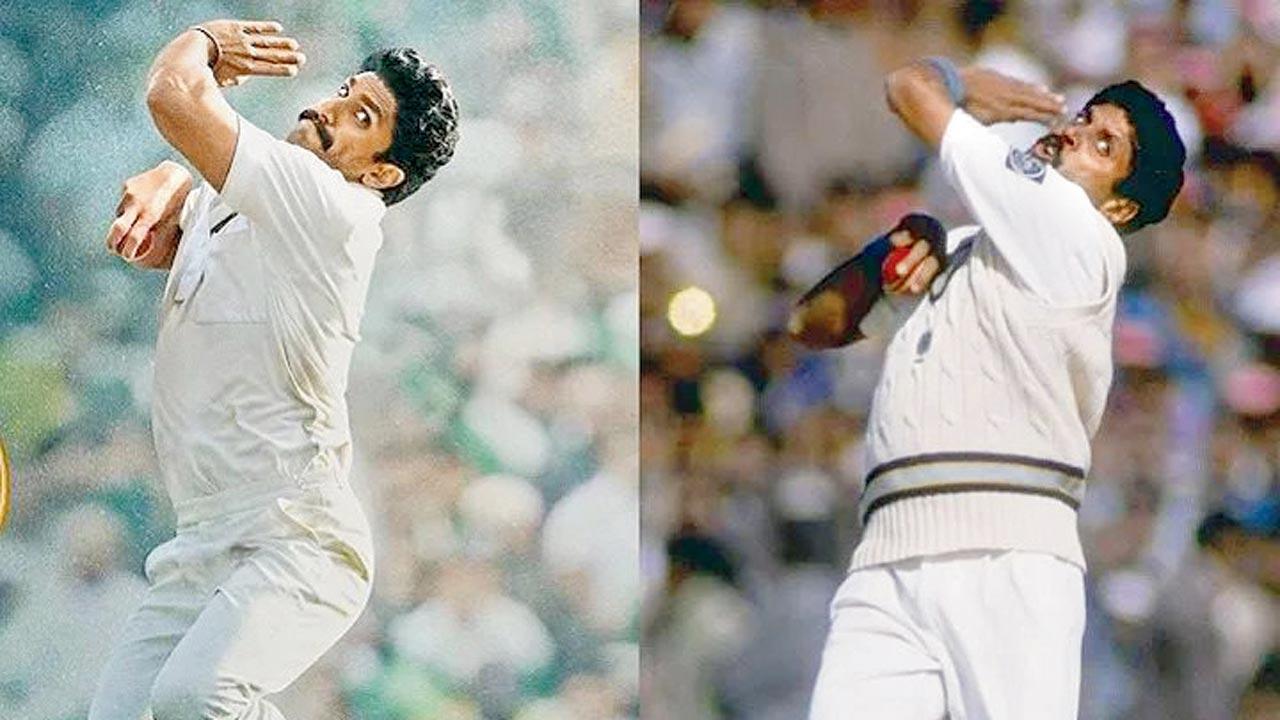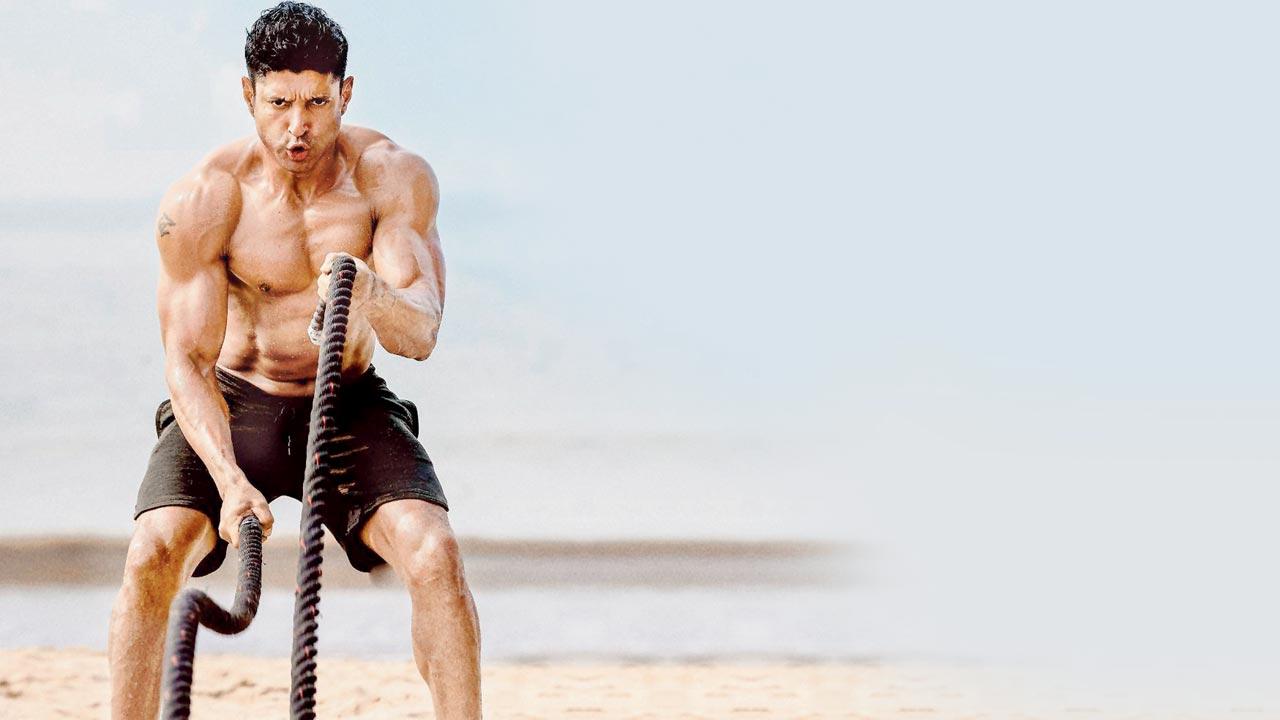With sports films being a hot favourite among directors, mid-day chronicles the making of an athlete for the screen

Pannu in Rashmi Rocket
Step 1: Casting
ADVERTISEMENT
Surprising though it may seem, physical fitness trainers and physiotherapists can also have a hand in the casting process for a film. Physiotherapist Vaibhav Patil had said of his work on Ranveer Singh’s 83, “We are appointed early on, often when [casting is underway]. For a film like 83, where [we] needed actors to look like the cricketing legends they were set to play, the casting process was crucial. As a physio, I analyse if a person will be able to replicate a desired body language and discuss that [with the makers].” If a director was keen to rope in an actor despite suggestions, Patil says they would spend more time with the actor to “address imbalances”.
Eshan Naqvi, one of Parineeti Chopra’s trainers for Saina, had also spoken of the advantage that the actor had, that made her suited for the part. “She has a good hand-to-eye-coordination,” he had said, adding that her training in kalaripayattu and yoga was a bonus because “flexibility is a key factor in badminton.” “Because the shuttle can move in any direction, a player should be able to move and twist accordingly — pull herself, and turn in any direction. She had that flexibility.”
Step 2: (P)rehabilitation
Physical fitness trainers know better than to wait for injuries to occur before dealing with them. Most specialists choose to assess an actor’s imbalances, and work on therapy even before training for a film begins. Often, this therapy can also be sports-specific, as Melwyn Crasto, athletic coach with the Central Railways, who worked with Taapsee Pannu on the sprinting film Rashmi Rocket, tells us. “Foot gymnastics strengthens the ankles, shin, Achilles tendon and planta fascia. Those who don’t practice it complain of pain because their feet are weak. It includes six drills, which we used to perform before each training session with Taapsee, to avoid the onset of injuries.”
Similarly, Patil, who had to deal with actors who would be sporting stud shoes in 83, says, “None of them were accustomed to wearing stud shoes, so we had to foresee the kind of ankle issues they could face, and start strengthening the ankle. Our aim was to prevent injuries. These actors had to mimic legends whose actions were unique. There’s a lot of change that their bodies had to undergo. They had to ace movements that may be at odds with their own natural movement. We began with assessments. If we realised that someone has a weak hamstring before the prep, it means that they would be prone to hamstring injuries later. So, from the onset, we’d train that muscle. Ranveer had a shoulder injury from Padmaavat. In the past, he has had a surgery, and a labral tear. So we had to address his needs accordingly with the use of thera-bands and form rolling. Whether or not any actor encountered pain, he had to follow a therapy plan.”
Often, Patil found himself teaching actors to undo what they had been taught. Working with the team of Gold during their hockey prep, Patil, who came on board a while after the cast members had been learning the sport, realised that they were plagued with back pain. “In the era that we were replicating in Gold, the hockey sticks were longer, and the mechanics of the game was different. None of today’s hockey players or the coaches knew how to deal with that length. That puts a lot of load on the back. We had to address that.”
Step 3: Sports-specific training
Here comes the “fun” part. Did you know that practicing running will not make you a better swimmer? Fitness is so specific, that to excel at one sport, a generic programme will not serve any purpose. Sahil Rasheed, who trained Shriyam Bhagnani for the sumo-based film, Sumo Didi, recalls that because the character in the film was seen training with minimal equipment, he had the actor train with empty gas cylinders, which helped her better her grip strength. “In a deep squat, we’d make her sweep the floor.”
While prepping for the dance-based film, Street Dancer 3D, Varun Dhawan recalled how he needed to up his lower-body training in the gym, because “people who dance need a lot of strength in the leg muscles.”
Crasto compares running drills to the art of learning the alphabets, and hence, aptly calls them Running ABC. Speaking of enabling Pannu to ace the art of running, he says, “We’d perform the running ABCs. It involves breaking down the act of running into small components that must be mastered before being put together for the final sport. There are about 14 drills, like high knees, butt kicks, lunges and then running lunges.”
World class fighter Darrell Foster, who helped Farhan Akhtar ace the role of a boxer in Toofaan, stressed on the need to develop mental agility since “most of the boxing occurs between the ears”. “If you get cut, hit, or hear a loud noise, [I can] get a reaction from you. That’s when I’ll hit you. You make your opponent do that, and in that split second, [the game is yours]. The analogy of a train coming down the track [is employed here]. The train can only operate on the track. It’s [a boxer’s] job to derail the opponent, get him tired, and keep him looking for you.”
Step 4: Sports-specific non-training?
 Chopra in Saina
Chopra in Saina
While designing a certain kind of training is essential, avoiding other training methods is crucial as well. Naqvi reveals that his team had to avoid heavy weight-lifting sessions for Chopra because she had to be agile. “The shuttle is the fastest-recorded [object] in sport, travelling at a speed of 400 km per hour. It takes a normal person four years to be ready to merely play a match, let alone [win a competition]. You need to be agile and execute fast movements, and hence, heavy weight-lifting is not an option. Parineeti’s routine was so vigorous that she would do physiotherapy to strengthen her core.”
Step 5: Emulating the idol
 Singh in 83 with a file photo of Dev
Singh in 83 with a file photo of Dev
Shrikant Vad, president of the Thane Badminton Academy, and under whose watch Naqvi was training Chopra, spent 12 days with her at the academy. “We focused on service, footwork, and point of contact with the shuttle. We know how Saina [Nehwal] serves—it is a famous [aspect of her game]. We would watch videos of Saina, and demonstrate [the movements] for Parineeti. We paid heed to how her elbow [moved], how she held the [racquet], and her swing.”
Cricketer Balvinder Singh Sandhu, who had been coaching Singh for 83, had said that he’d “show Ranveer videos of Kapil Dev” during their preparation. “We’d take his video from two angles and show him how his hands were moving. We had to then draw parallels with Kapil’s movements, and make adjustments accordingly.”
Step 6: Getting an actor, shoot-ready
 Akhtar in Toofaan
Akhtar in Toofaan
Getting an actor to mimic a sports-person is only one part of the job at hand. Crasto, who had also trained Akhtar for Bhaag Milkha Bhaag, had said that he had devoted more sessions of endurance training with Pannu than he did with athletes. “An athlete is made to run a 100-metre race, and that’s the end of it. But, an actor may commence running, and the director may cut the shot, complaining about an incorrect running form of either the actor, or another runner in the frame. This is something I learnt while training Farhan. Often, the actor is made to run repeatedly throughout the day. Even then, only half a race would be shot. Hence, endurance training is necessary for them to sustain such high levels of activity without compromising on the form.”
 Subscribe today by clicking the link and stay updated with the latest news!" Click here!
Subscribe today by clicking the link and stay updated with the latest news!" Click here!







